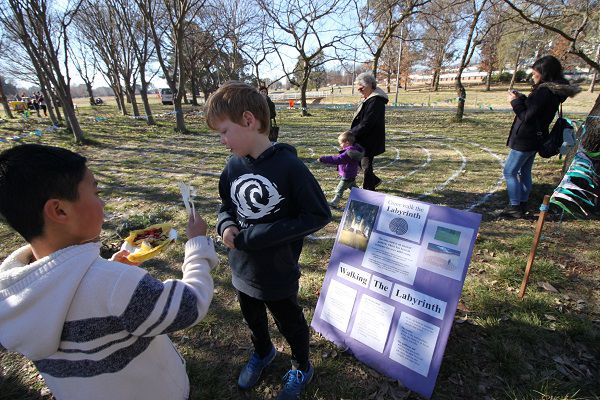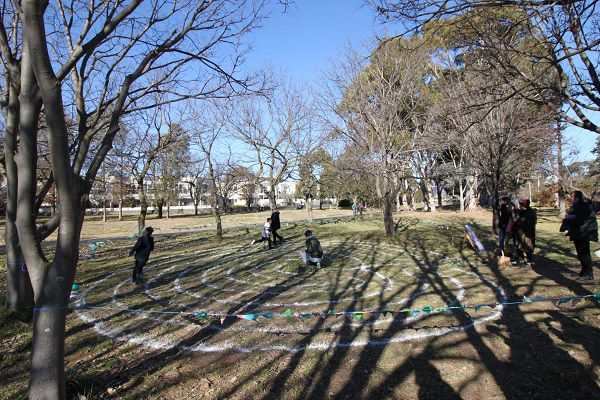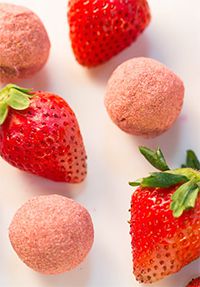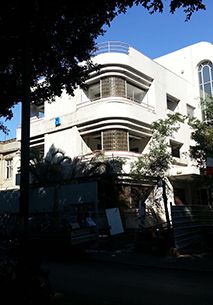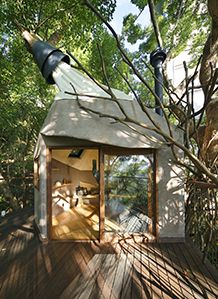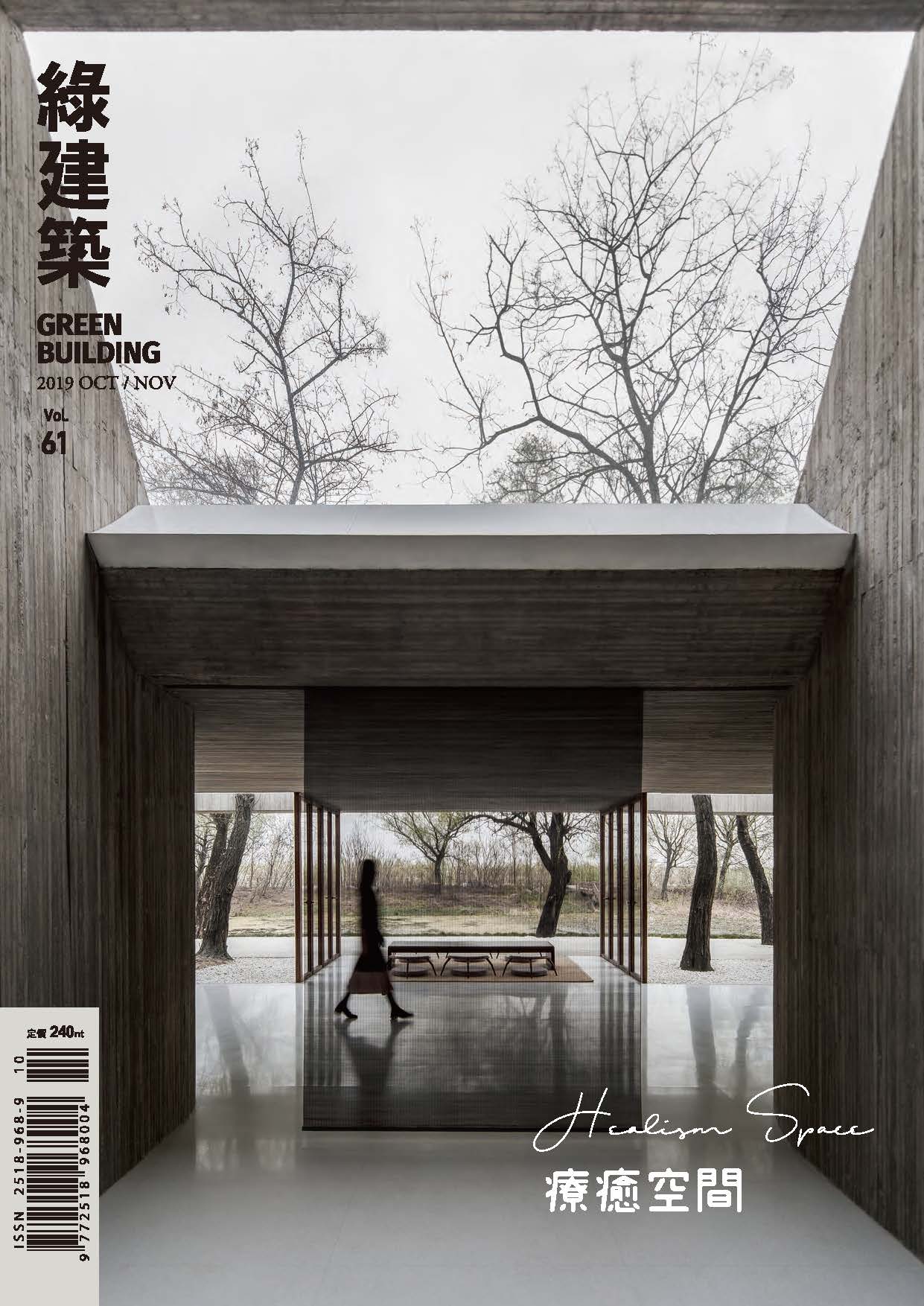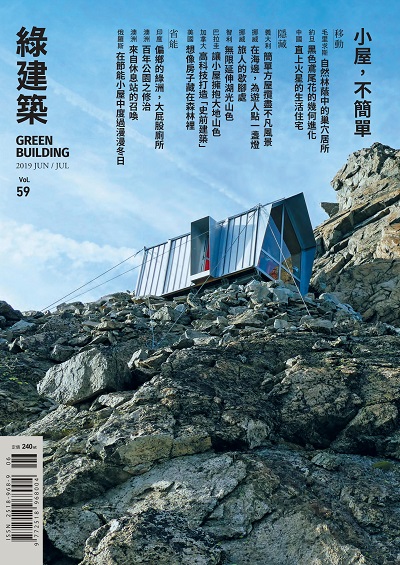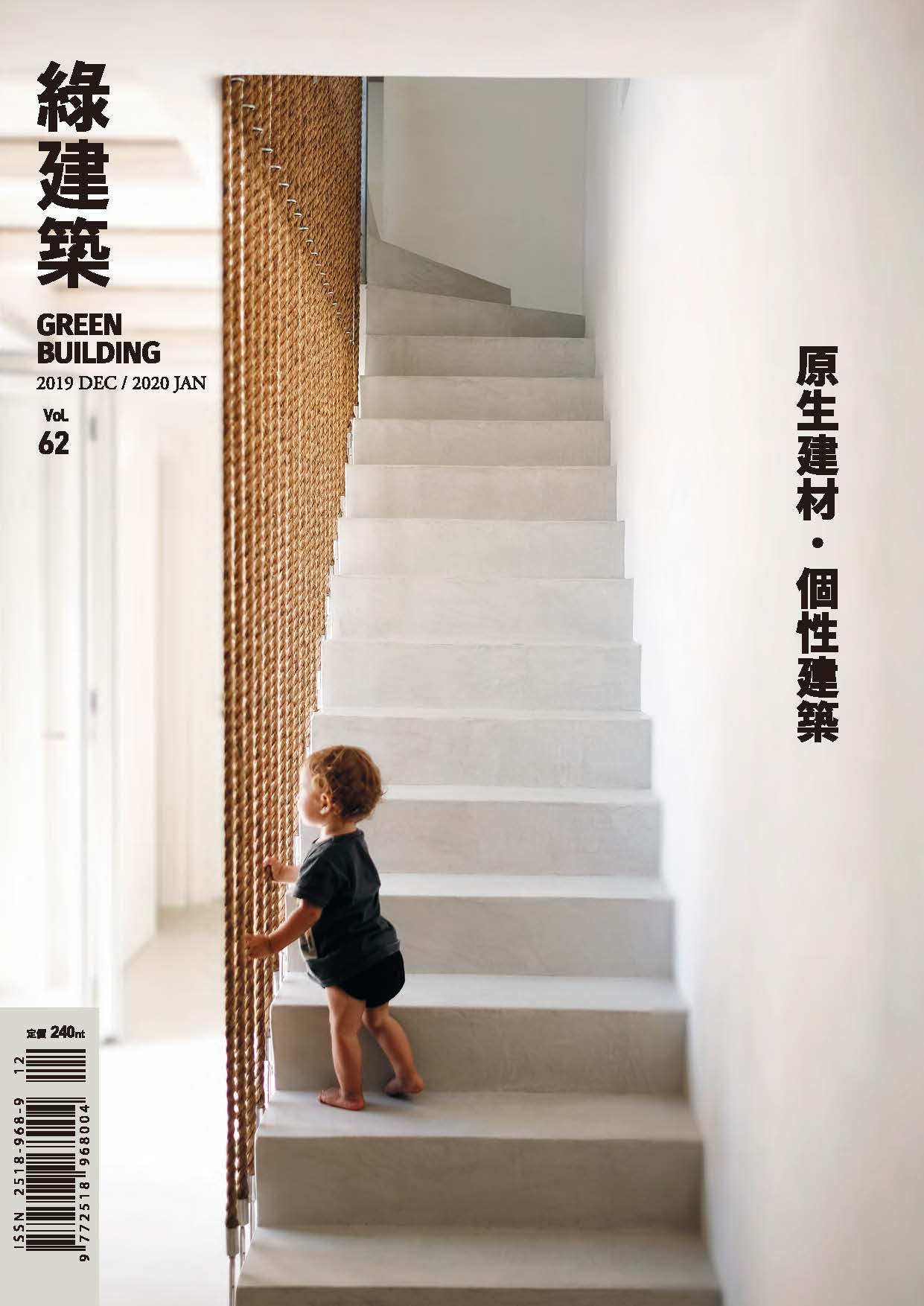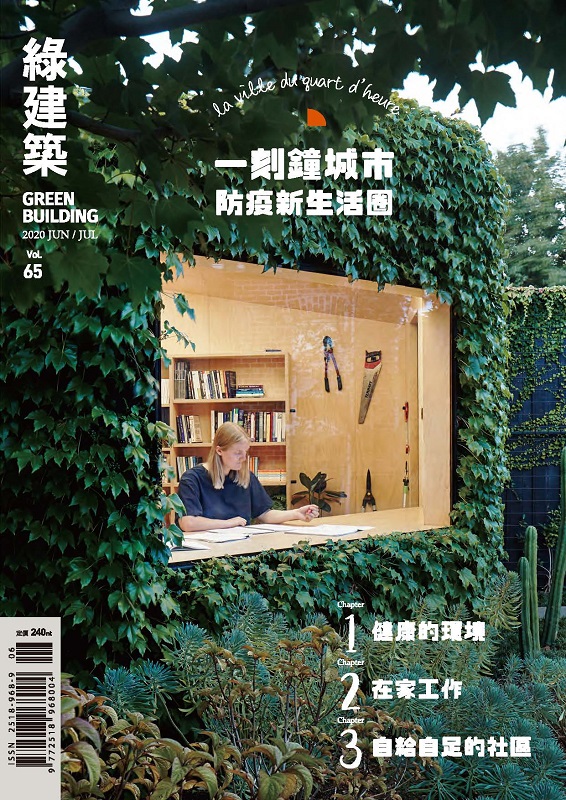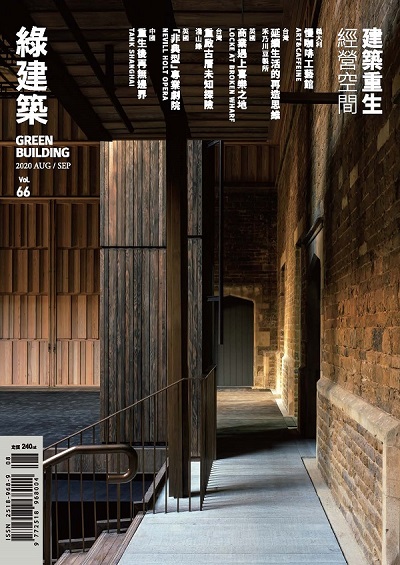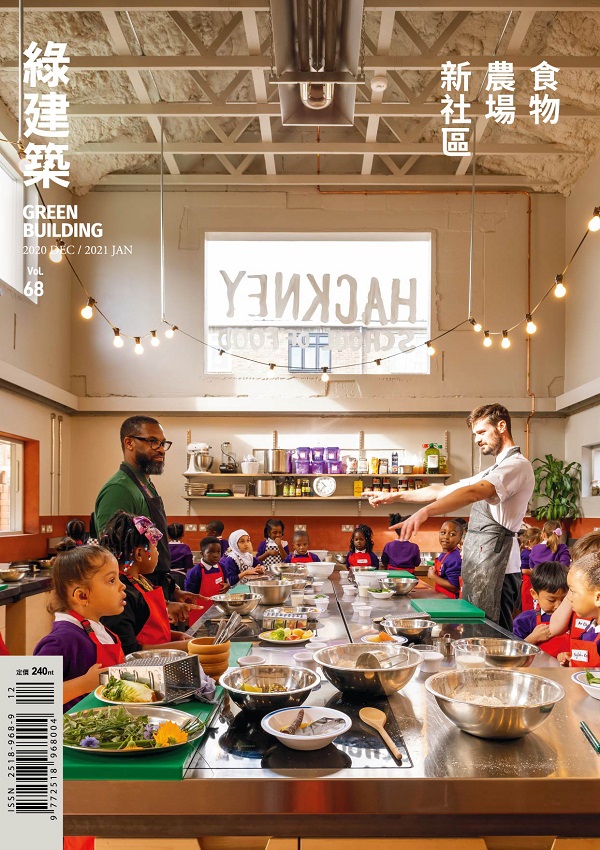療癒系城市地景:坎培拉第一座公共食物森林
Lyneham Commons Food Forest GREEN BUILDING 2019 OCT/NOV Vol.061
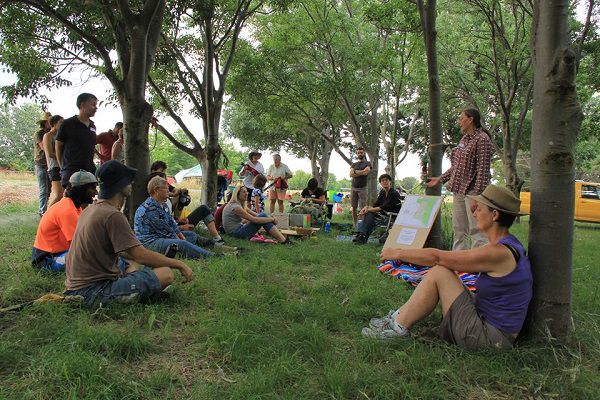
▲夏季:城市可食森林地景教育與當地居民社區工作坊。
療癒系城市地景:坎培拉第一座公共食物森林
Lyneham Commons Food Forest
文字、圖片提供:Susan Peachey(景觀設計師)
翻譯:Janelee Li 李怡貞、Evan Yu (CSED studio)
療癒土地
在坎培拉北部住宅區的某個角落有一塊長期被忽視的公有土地角落,乾燥、硬實的土壤和被修剪過的草正在逐漸變成一個富有生機的森林花園。萊納姆公共食物森林(Lyneham Commons Food Fores)首由一群在地永續農業愛好者發起,2019年8月為種植果樹的四周年,截至目前為止,這是一段相當漫長的旅程。
Healing the land
A previously ignored and neglected corner of public land in the northern suburbs of Canberra with dry, compacted soil and mown grass is gradually being turned into a productive forest garden. So why did a group of permaculture enthusiasts decide that this was an ideal spot to set up a food forest? August 2019 marks the fourth anniversary of the first fruit tree planting at Lyneham Commons Food Forest, and it has been quite a journey so far.
2013年,一群生活在萊納姆的朋友,積極在公共場所建立食物森林,與更多的社區分享他們對永續農業和食物森林的知識。食物森林是一種模仿天然森林生態的永續農作物系統。 它的生產效率很高,有各式各樣的可食用水果、堅果、草藥、莓果、根莖類和攀爬類,以及我們其他有益的植物。
In 2013 a group of friends, living locally to Lyneham, were motivated to establish a food forest in a public space to share their knowledge of permaculture and food forests with the wider community. A food forest is a perennial system of edible plants that mimics a natural forest ecosystem. It is highly productive with a diversity of edible fruits, nuts, herbs, berries, roots and climbers and other plants that are useful to us.
療癒共有資產
「共有」是我們共同享有的東西--文化和自然資源,如空氣、水和可居住的大地,都屬於共有的範疇內,即非私人的,社會所有成員都可以擁有的。由於此計畫是給社會大眾的一份禮物,尤其是在公共土地上執行的,重新開墾以造福眾人。為了傳達富足、信任及開放,它沒有任何圍籬、鎖或門,所以任何人都可以隨時隨地使用它。團隊發現萊納姆商店區附近有一塊荒廢的土地,旁邊是一條使用率很高、通往市區的自行車道,土地橫跨三間學校之間。他們認為這是食物森林的理想地點,因為經過的人都能注意到這裡,且臨近公共設施(例如商店、廁所),再加上當地社區的居民支持這個概念。
Healing the commons
The commons are the things we all share - cultural and natural resources such as air, water and a habitable earth are held in common, i.e., not privately owned, and accessible to all members of society. With the idea that this project was to be a gift to the community, it was important that the project was located on public land, as a way of reclaiming the commons for the benefit of all. To convey abundance, trust and openness, there was to be no fence, lock or gate to enclose it, so it remained accessible to everybody at all times. The group had noticed an unused piece of land close to the Lyneham shops, beside the frequently used bike path into town, and between three schools. Being very visible to passing pedestrians and cycle traffic, close to amenities (e.g., toilets at the shops) and knowing the local Lyneham community would be supportive of the concept, they thought that this would be an ideal place.
由於考量到環境惡化的情況--碳汙染、氣候變遷,且對於外來糧食日益增加的依賴度、破壞性的農耕法、殺蟲劑與除草劑的使用,及汙染水資源的無機肥料,這些原因促使該團體勇敢前進。英國小鎮計畫「不可思議、可以吃的托德摩登(Incredible Edible Todmorden)」是靈感的來源。托德摩登與其志願者一起將其街景改造成吸引人並具教育性的食用花園,且民眾可以自由使用。在此案例中,任何人都可以採收農產品,強調教育大眾如何種植糧食,並吸引並的社區志願者一起行動。
Concern about the deteriorating state of the environment – carbon pollution and climate change, food reliance based on food being trucked or flown in from far away, harmful agricultural practices, the use of pesticides, herbicides, and inorganic fertilisers that create pollution in waterways - urged the group forward. Incredible Edible Todmorden, a town in Britain, was a source of inspiration. Todmorden has, with a community of volunteers, transformed its streetscape into a series of attractive and educational edible gardens completely accessible to the public. This example, where anyone can harvest the produce, the emphasis on educating the public about food growing and bringing community volunteers together greatly appealed.
療癒社區
積極鼓勵坎培拉社區種植自己的食物、學習共同永續生活的方式、簡單的生活,以達到重建社區及社會資本的目標。社會資本是特定社區中人們之間的關係網絡及其有效運作的能力,在透過一同分享願景、規劃事項、確立工作事項的過程中被強化,進一步建立公共食物森林。
Healing the community
A strong desire to encourage the Canberra community to connect with growing their own food and learning ways to live a more sustainable, simple life together was combined with the further aim of providing an opportunity to rebuild community and social capital. Social capital, the networks of relationships amongst people in a particular community and their ability to function effectively, are enhanced by bringing people together to share, in this case, the vision, planning and work establishing and harvesting a food forest.
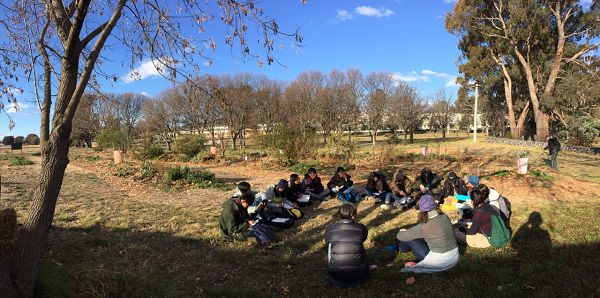
▲冬季:城市可食森林地景教育(2018 年與台灣中原大學景觀系學生 CYCULA)。
分享願景
經過了兩年的協商、無數的文件及相關會議,終於獲得當地政府批准。這是坎培拉公共土地上的第一個食物森林,當時面對所提出責任歸屬及可否長久運行等議題時,該團體顯得毫無防備。但是在社區諮詢的500名受訪者之中,獲得95%正面結果,以及謝恩.拉頓布利(Shane Rattenbury)部長的援助下,最終取得了成功。在2015年8月的一個寒冷的日子裡,第一個萊納姆公共食物森林的志工活動吸引了大批熱情的人,他們很快就挖了四長長的溝壑。
Sharing the vision
The process of getting approval from local government took two years of negotiation and many, many documents and meetings. This was the first food forest on public land in Canberra, and that it was to be unfenced brought up issues around liability, as well as uncertainty about the longevity of the group. Strong support from a community consultation returned a 95% positive result from 500 respondents, and backing from Minister Shane Rattenbury eventually lead to success. On a bitterly cold day in August 2015, the first Lyneham Commons Food Forest working bee was attended by a large crowd of enthusiastic people who dug four long swales in no time at all.
坎培拉的降雨量非常少,每年平均降雨量為617毫米。開闢溝壑是一種被動式集水技術,可收集降雨並儲存在土壤中,使土壤中的水分能更長久的提供給植物。利用等高線上挖出長溝,這條溝可以減緩徑流的速度,並使其滲入土壤。我們在此有一個溝壑和護堤系統來儲存土壤中的水分,所以不需要經常使用水管澆水。
Canberra has a very low rainfall, an average of 617mm annually. Swales are a passive water harvesting technique that captures rainfall runoff and stores it in the soil, enabling soil moisture to be available to plants for longer. Swales are created by digging a long trench on contour that slows down runoff and allows it to infiltrate the soil. At Lyneham Commons we have a swale and berm system to store water in the soil and we don’t have to water so often with the hose.
謝恩.拉頓布利部長和知名電視節目「澳洲園藝」主持人參加了開幕儀式,他描述這項計畫深具國家級別的意義,並幫助種植了第一批果樹。
The opening event was attended by Minister Rattenbury and Gardening Australia’s popular TV host Costa Georgiadis, who described the project as having national significance and helped to plant the first fruit trees.
每周定期的志工活動都在持續進行,自第一次活動以來已經取得了很多進展。社區居民們十分踴躍,他們喜歡分享工作、了解食物森林並且彼此寒暄。活動包括種植、翻土、覆蓋護根、除草、修剪、灑上綠肥等。我們亦提供教育活動,如:自然害蟲控制、土壤測試、種植果樹,在這裡學習可以應用在家中的技能,而且總是有時間可以一起交流及共享一餐。
Regular monthly working bees have continued and a lot of progress has been made since that first event. Working bees are attended by volunteers from the community who enjoy sharing the work, learning about the food forest and meeting each other. Activities include planting, broad-forking, mulching, weeding, pruning, sowing green manures, etc. We provide educational activities – e.g., natural pest control, soil testing, planting a fruit tree – where volunteers learn skills that they can apply at home. And we always have time to socialise and share a meal together.
分享計畫
由大約10名資源共享者所組成的核心團隊,每月定期舉行一次計畫會議,以推動待進行的子項目,例如水箱、解說牌、防風林、棲息地種植等。如果採取了錯誤的行動方案,反饋可以審視及改變做事的方式。最坦誠的批評來自於團隊內部,因為彼此已經建立了足夠的信任,使得每個人得以自由地表達他們的意見,培養這種開放的態度是非常重要的。要形成強大的團結力,人們需要一起工作、一起進食。在這裡,二者都做了很多,因此產生了一個團結緊密的團隊。
Sharing the planning
A core team of approximately ten "Commoners" have regular planning sessions once a month to progress sub-projects we are pursuing, such as water tanks, interpretive signage, windbreaks, habitat planting, etc. Feedback allows us to review and change the way we do things, if we feel we are following a wrong course of action. The most honest criticism comes from within the group where enough trust has been built up for individuals to freely express their opinions. This openness is very important to foster. It has been found that to form strong bonds, people need to work together and eat together. We do a lot of both and have a tight team.
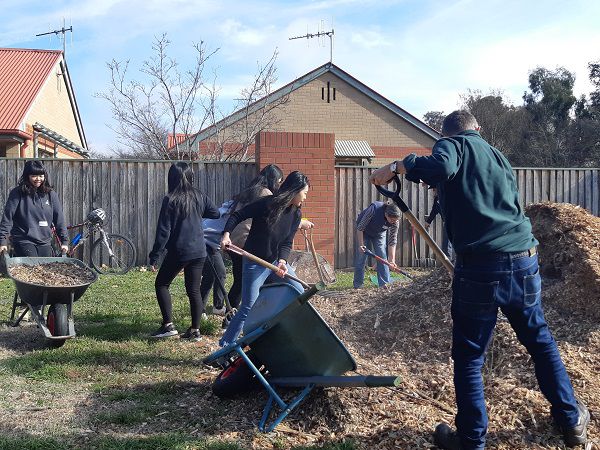
▲冬季時台灣中華大學景觀系學生參與社區工作坊(2019)。
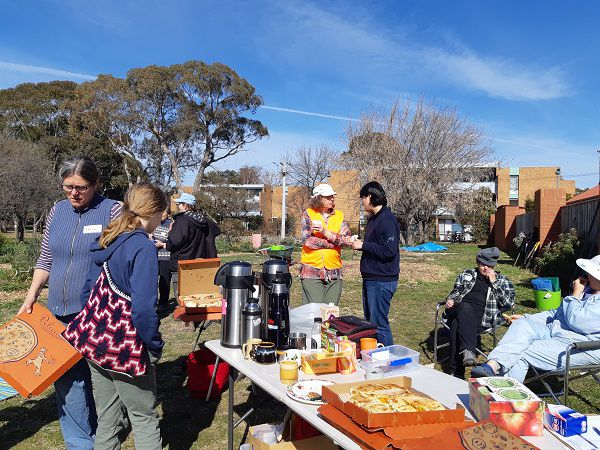
▲社區工作坊後,大夥共享餐食聚會(2019)。
我們還有一個負責規劃食物森林的設計小組,這是一項艱鉅的任務,因為基地總面積為3,000平方公尺,種植的護堤面積為240平方公尺。透過基地分析、建立任務原則聲明、概念和種植計畫來實現這一目標。更創建了季節性的時間表,因為有些工作必須在一年中的某些季節進行,例如在較涼爽的月份種植果樹,以便在炎熱的夏季之前完成布署。這個時間表可幫助提錢組織工作,例如準備土壤、購買樹木、收集堆肥和菌根真菌用於種植、樹木圍欄、木樁等。
We also have a design group responsible for the planning of the food forest. This has proved to be a large task as our site overall is 3000m2 with 240m2 of planted berms. We have managed this by undertaking a thorough site analysis, creating a guiding mission statement, concept and planting plans. We have also created season-based timelines as some activities need to happen at certain times of the year, e.g. planting fruit trees in the cooler months to allow establishment before the heat of summer. Our timelines allow us to organize in advance of working bees, e.g. prepare soil, purchase trees, gather compost and mycorrhizal fungi for planting, tree guards, stakes, etc.
植栽的選擇需要大量的初步研究,我們首先設計冠層,即水果和堅果樹,仔細考量了成熟樹木的尺寸、距離,以及如何長期維持整座林系的日照。盡可能地種植傳統果樹和堅果樹,傳統樹種是我們的祖父母輩在果樹商業化量產前種植的,商業化導致廣泛使用肥料和殺蟲劑,我們寧願擁有健康、美味的水果、不含農藥殘留。古老樹種對病蟲害的抵抗力也更強,且更營養更好吃。超級市場販賣的水果是商業栽種,可以長期儲放,但味道不是那麼好,營養成分較少,也不比直接從樹上摘採新鮮。
Plant selection requires a lot of initial research and we started by designing the canopy layer, i.e. selecting our fruit and nut trees first. We gave careful consideration to the mature size of trees, how close they are to each other, and how we can retain sunlight to the whole system in the long term. We have favoured heritage fruit and nut trees where we can. Heritage trees are the old fashioned trees that our grandparents grew before the commercial production of fruit trees which lead to the widespread use fertilisers and pesticides. We would rather have healthy, good tasting fruit without pesticide residues. Heritage varieties are also more resilient to pests and diseases, have more nutrients and taste better. Supermarket fruit has been bred for commercial reasons, e.g. their ability to be stored for long periods; but they don’t taste so good, have fewer nutrients and are not as fresh as harvesting directly from a tree and eating it.
分享工作
該項目的每一個環節皆是由志工負責。所有購買的植物都是通過捐贈或募款來支付的。我們種植了很多自己的植物,也會在當地社區活動中販賣以籌款,例如坎培拉環境中心舉辦的豐收節。
Sharing the work
Every aspect of the project has been run by volunteers. All the purchased plants have been paid for from donations or fundraising. We are growing a lot of our own plants, which we also sell to fundraise at local community events, such as Harvest Festival held by the Canberra Environment Centre.
我們種植了一系列的果樹和堅果樹,這些樹將在一整年提供種類多元的水果,而不是一次大量收穫。它們包括桑葚、石榴、櫻桃、山楂子、蘋果、無花果、李子、斐濟果、杏和榛果。我們在每個開發階段持續種植,並且評估在不斷變化的氣候條件下,哪些品種表現較好。
We have planted a range of fruit and nut trees that will give us a spread of fruit across the season, rather than a lot of fruit all at one time. They include white mulberry, pomegranate, sweet and sour cherries, medlar, apples - eating and cider, fig, plums, feijoa, apricot and hazelnuts. Our planting continues as we prepare and develop each stage, and as we assess which varieties are doing well in our changing climatic conditions.
隨著我們持續全面性的設計,開始處理更多的植物,種植冠層的樹,以支撐而非競爭來組織各類行的植物,此為互助性設計。利用植物來餵養其他植物,養育蜜蜂的植物,幫助植物授粉繁殖,並在害蟲生長前餵養益蟲。例如,將一棵植物種在李樹旁邊,以幫助健康生長;或者,利用固氮微生物,以及種植會誘食蚜蟲的植物,蚜蟲是李子的常見害蟲。
As we continue to design from the top down we start to deal with greater numbers of plants. We organise them in ways that will be supportive rather than competitive to the productive canopy trees. We call this guild design. We use plants that feed other plants, plants for bees, for pollination and beneficial insects that predate on pests. For example we put a plant next to the plum tree that is going to help it be healthy, e.g. a nitrogen fixer, and a plant to attract insects that eat aphids, a common pest of plums.
現在的社會高度依賴超級市場,這意味著我們已經忘記季節性及當地性飲食,因為全年都可以購買進口食品。國際食品運輸會造成碳汙染,當附近很輕易就可以栽種許多農作物時,就顯得很不必要。我們為了烹飪、醫療等目的種植了一系列草本多年生植物,而它們富含花蜜的花朵可吸引蜜蜂和益蟲,這些植物包含: 迷迭香、鼠尾草、西洋蓍草、紫草、大黃、茴香、琉璃苣、多年生菠菜、洋菠菜、檸檬馬鞭草、檸檬香脂、薰衣草、薄荷、澳洲薄荷、科西嘉薄荷、牛至、意大利菊苣、百里香等。還種植了各式各樣可食用的漿果、鱗莖、塊莖、布什塔克叢林植物(可食用的澳洲本土植物)和匍匐莖類,例如歐洲防風草、大蒜、辣根、山椒、無刺黑莓、原生覆盆子、原生灌木番茄、草莓、紅和黑醋栗、枸杞、蘆筍等,植物多樣性可抵抗不可預測的氣候變遷並保持恢復力。
As a society, our reliance on supermarkets has meant we have forgotten how to eat seasonally and locally, since we can purchase imported food all year round. The transportation of food nationally and internationally contributes to carbon pollution, and is unnecessary when many things can be grown easily nearby. We grow a range of herbaceous perennials for culinary purposes, medicinal use and for their nectar rich flowers that attract bees and beneficial insects, e.g. rosemary, sage, yarrow, comfrey, rhubarb, fennel, borage, perpetual spinach, Warrigal greens, lemon verbena, lemon balm, lavender, mint, Australian native mint, Corsican mint, oregano, Italian chicory, thyme, and more. We also grow a range of diverse edible berries, bulbs, tubers, bush tucker plants (edible Australian natives), and climbers, e.g., parsnip, garlic, horseradish, mountain pepper, thornless blackberry, native raspberry, native bush tomato, strawberry, red and black currants, goji berry, asparagus, and more. Plant diversity is important to retain resilience in an unpredictable and changing climate.
我們的土壤一直充滿挑戰,開始時養分和有機物質含量非常低,而且必需種植一些要高度照料的果樹。為了緩解這種情況,以廉價的方式鋪植了有機肥料,以幫助穩定氮含量和播種有機物質,可以在土壤上快速覆蓋植被,阻擋陽光直射和防止乾燥的風吹過土壤表面,以降低水分流失。使用有機肥料如苜蓿和羊毛莢,能夠將大氣中有價值的氮鎖在根部的結核上,以自然的方式提高土壤的肥沃度,同時也為蜜蜂及其他的果樹授粉者提供了良好的蜜源。特別是根系非常深的紫苜蓿,可以鑽破堅硬、厚實的土壤,並且是可以依季節修剪持續生長的多年生植物。其他的綠肥則每年都放入土壤中,以增加有機質。
Our soil has been challenging, being very low in nutrient and organic matter to start with, and having to cope with growing fruit trees that are heavy feeders. To mitigate this we have grown green manures to help fix nitrogen and provide organic matter. These are sown as seed and are an inexpensive way to get a quick vegetative covering over the soil, blocking direct sunlight and the drying winds across the soil surface and reducing moisture loss. Some of the green manures we use, such as lucerne and woolly pod vetch, have the ability to fix valuable nitrogen from the atmosphere onto nodules on their roots. They help us increase the fertility of the soil naturally and also provide a good nectar source for bees, pollinators of our fruit trees. Lucerne in particular has a very deep rooting system which breaks up hard, compacted soil and being a perennial can be cut back seasonally and continue to grow. Other green manures are dug into the soil annually to increase organic matter.
我們還在我們的果樹之間種植了澳洲金合歡樹和灌木,因為它們能夠穩定氮含量。由於生長非常快速,為庇護和遮蔭做出了貢獻。我們的目標是形成一個生態系統,而不是單一樹種。每年修剪、施肥,釋放氮氣,讓土壤分解為有機肥,循環並轉換成有用的養分。其他被稱為「動態蓄電池(dynamic accumulators)」的植物通常具有深根,並且能夠從土壤深處吸取養分。紫草科植物是其中一種,它提供了鉀和鈣,當它在被修剪或在冬季死亡時,葉子中儲存的營養可以在土壤的上層供其他植物汲取。果樹有各自需要不同的營養成分,在附近種植合適的動態蓄電池植物,得以促進自我繁殖能力。
We have also planted acacia trees and shrubs, native to Australia, between our fruit trees for their ability to fix nitrogen. Being very fast growing they have contributed to shelter and shade and rather than a collection of single trees we have the sense of an ecosystem beginning to form. We ‘chop and drop’ these annually, releasing the nitrogen and allowing the cuttings to be decomposed by soil organisms that benefit our trees by recycling organic matter into available nutrients. Other plants known as dynamic accumulators often have deep tap roots and are able to draw up nutrients from deep in the soil. One of the most important dynamic accumulators is comfrey, which supplies potassium and calcium. When it is cut, or dies down over winter, the stored nutrients in the leaves becomes available in the upper layers of the soil where other plants can take it up. Fruit trees each need different nutrients and by planting the appropriate dynamic accumulator nearby we can facilitate self-fertility.
在歷經了一次令人失望的測試結果後,我們在2018年共同努力改善該地土壤,而持續炎熱乾燥的天氣加劇限制了土壤中有機體的活動。2018年的總降雨量為472毫米,僅為年平均值的76%,此時我們成功獲得了ACT坎培拉政府的撥款申請,從當地供應商那裡購買了大量優質的有機堆肥,問題因此得以改善。擁有此項援助是非常幸運的,因為當地政府的限制、對囓齒動物及異味的擔憂使我們無法在現場堆肥。
In 2018 we made a concerted effort to improve our soil after a disappointing test result. Ongoing hot and dry weather conditions have exacerbated the issue limiting the activity of soil organisms. Total rainfall for 2018 was 472mm, only 76% of the annual average. We were successful in a grant application from the ACT government to purchase a large amount of high quality organic compost from a local supplier, and this has helped. We are fortunate to have this resource nearby as we haven’t been able to compost on site due to the local authority’s restrictions and concerns around rodents and smells.
分享收穫
我們運用了森林的模式並將其應用於農業,為了幫助模仿天然森林生態系統,將之分解為七層,每層都充滿了森林中適當的日照,雖不期望能夠完全複製大自然,但通過模仿,可以開始創建一個永續的生態系統。經驗顯示,一旦開始栽種,昆蟲和鳥類很快速地就進駐了這個地方,與大自然和諧共處是如此的美好。
Sharing the harvest
We have used the pattern of a forest and applied it to agriculture. To help us mimic a natural forest ecosystem it has been broken up into seven layers. Each layer fills a niche of sunlight in the forest. We cannot expect to be able to exactly replicate nature, but by mimicking it we can start to create a self-sustaining ecosystem. We have seen how quickly the insects and birds have occupied the space once we started planting and how good it is to work in harmony with nature.
在蚜蟲入侵的同時,李子樹上也發現了瓢蟲,蚜蟲會吸食樹木的樹液,如果繁殖過多便會對樹木生長造成壓力,然而就在幾天後,蚜蟲被瓢蟲吃掉了。瓢蟲以蜘蛛蟎、蚜蟲、介殼蟲及小毛毛蟲為食,牠們通常在鬆散的樹皮下冬眠。
An infestation of aphids occurred at the same time we spotted ladybirds on our Mariposa plum tree. Aphids suck the sap of trees and can cause stress if they get too numerous. Several days later the aphids had been eaten by the ladybirds. Ladybirds feed on spider mites, aphids, scale insects and small caterpillars. They usually hibernate over winter, for example, beneath loose bark.
我們希望誘導像瓢蟲、食蚜蠅和其他益蟲在此逗留,食蚜蠅是像黃蜂的蒼蠅,以花蜜和花粉為食,其他還有昆蟲包括蜘蛛、寄生蜂、蜈蚣及甲蟲。益蟲喜歡在多年生植物中棲息,其花朵可以提供花蜜,這些昆蟲的口器都很短,只能從淺型花中覓食,如繖形科或菊科植物,也被稱為雛菊或紫菀家族,例如 金盞花、向日葵、大波斯菊、蒲公英等等,其中一些還有可食用的花瓣。我們不噴灑殺蟲劑,因為這也同時會嚇阻了花園的天然保護者,讓植物自然的開花並播種,因為這會引導植物自然播種並可保留益蟲的棲息地。
We want to encourage ladybirds and other beneficial insects like hoverflies to stay around. Hoverflies are wasp-like flies that feed on nectar and pollen. Other useful insects include spiders, parasitic wasps, centipedes and beetles. Beneficial insects like to shelter in perennial plants with flowers that provide nectar. These insects have short mouthparts and are only able to feed from shallow flowers such as those from the umbelliferae or compositae families. They are also known as the daisy or aster family, e.g. calendula, sunflowers, cosmos, dandelions and many more. Some of these also have edible petals. We do not spray with insecticides as this sets back the garden’s natural protectors. We allow plants to flower and go to seed. This encourages self-seeded plants and retains habitats for beneficial insects.
從地方當局拿到了木屑覆蓋物,這是從樹木栽植者修剪或移除樹木後碾碎而成。使用木屑鋪蓋在地面,模仿森林的落葉,有助於保持土壤中的水分並抑制雜草,有利於蚯蚓、真菌和其他有機物質進而改善土質。藉此將廢物轉化為資源,在一個過度浪費的世界中,這是一項影響深遠的行動。
We have woodchip mulch delivered to us from the local authority. When their arborists prune or remove trees they chip them up into mulch. By covering the ground with mulch we mimic the forest litter of falling leaves. It helps to retain moisture in the soil, suppresses weeds and is good for earthworms, fungi and other organisms that recycle organic matter and improve the soil. We are turning a waste product into a resource. In a world that produces far too much waste, this is a powerful action.
執行計畫期間,有四棵新種植的果樹被偷走了,這並非完全出乎意料的事,因為該基地完全開放,而我們住在市區。當立起「萊納姆公共食物森林(Lyneham Commons Food Forest)」的標誌並說明目標及表明這是一個志願性質的社區團體之後,盜竊行為就停止了。我們在此舉辦了一個兒童藝術課程,為標誌製作圖案,所以現在孩子們可以看到他們的藝術作品在公共場合展示,並覺得自己也是此處的主人。可惜的是,我們的標誌目前被當地居民視為塗鴉,有時社區居民的反應會以意想不到的方式出現並帶來挑戰,我們將會持續以正面的心態應付這些挑戰。
Four newly planted fruit trees have been stolen from our project. This was not completely unexpected. The site is totally open to everyone and we live in an urban area. Theft stopped once we put up a Lyneham Commons Food Forest sign stating our aims and that we are a voluntary community group. We held a children’s art workshop at the Commons to generate the graphics for the sign, so now the children can see their art work being displayed in public and feel a sense of ownership of the Commons. Unfortunately our sign is currently being targeted by graffitists; sometimes community engagement comes in unexpected ways and can present challenges. We will continue to work through these challenges with a positive mind-set.
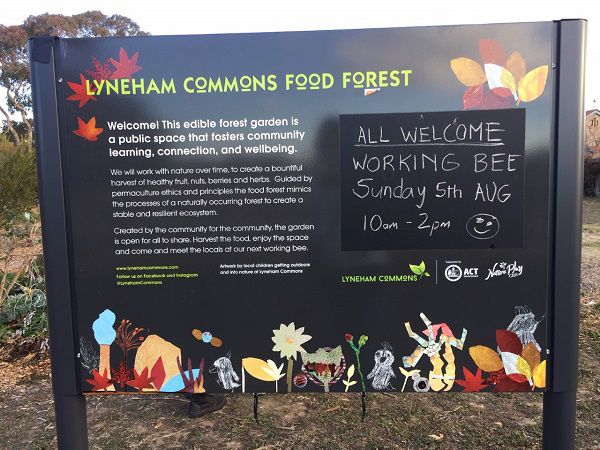
▲由當地孩童共同集體創作的告示牌。
▲冬季藝術迷宮(2018)。
▲古老傳統迷宮大地遊戲。
我們領悟到事物之間的聯結與事物本身一樣重要,這是一個長期的計畫,最終的成功是看到食物森林受到重視與照顧,而兒童是其中關鍵。我們鼓勵孩子參與活動,研究顯示,親身參與種植食物的孩子會更愛吃水果和蔬菜,看到孩子們一起種植果樹的熱情著實令人振奮,接著他們喜歡去觀察他們所種下的樹是如何長大的。
We find the connections between things are as important as the things themselves. This is a long term project and the ultimate success is to see that the food forest is valued and cared for, and children are the key to that. We encourage children to be part of our activities. Research shows that children who are involved in growing their own food eat more fruit and vegetables. It is truly heartening to see the enthusiasm of children planting a fruit tree together, and later they love to see how the tree that they planted is growing.
在澳洲,由於飲食不良及缺乏運動導致兒童的肥胖問題。與大自然連結有益於心理健康,我們希望看到孩子們快樂地參與自然遊戲,並了解他們的食物來自於何處,對於我們的星球來說,未來的世代與自然世界的聯繫是極其重要的。
In Australia, child obesity due to poor diet and lack of exercise is a problem. When we connect with nature it benefits our mental health. We want to see children happily engaged in nature play and knowing where their food comes from. It’s important for our planet that future generations are connected to the natural world.
這是一大群參與會議、活動和志願工作的人們,可以一起玩得很開心,真正感覺到正在改變這個世界,可以在此結交許多新朋友,有些人甚至一起創業了呢。在坎培拉開業的永續園藝公司僱用了三名固定成員,彼此了解,也知道可以一起工作並且相互依賴,這是一種很好的感覺。
It&rsq
